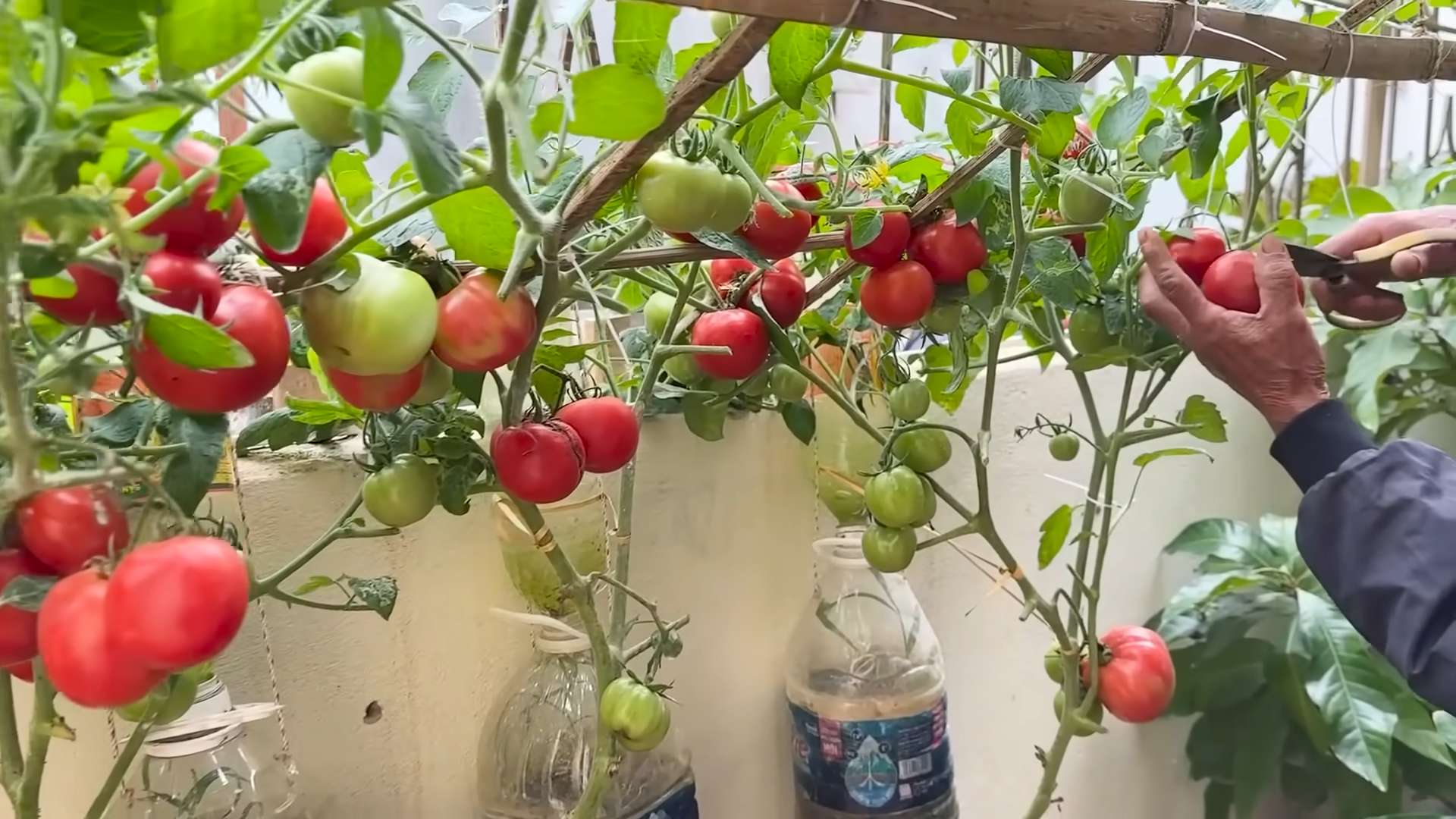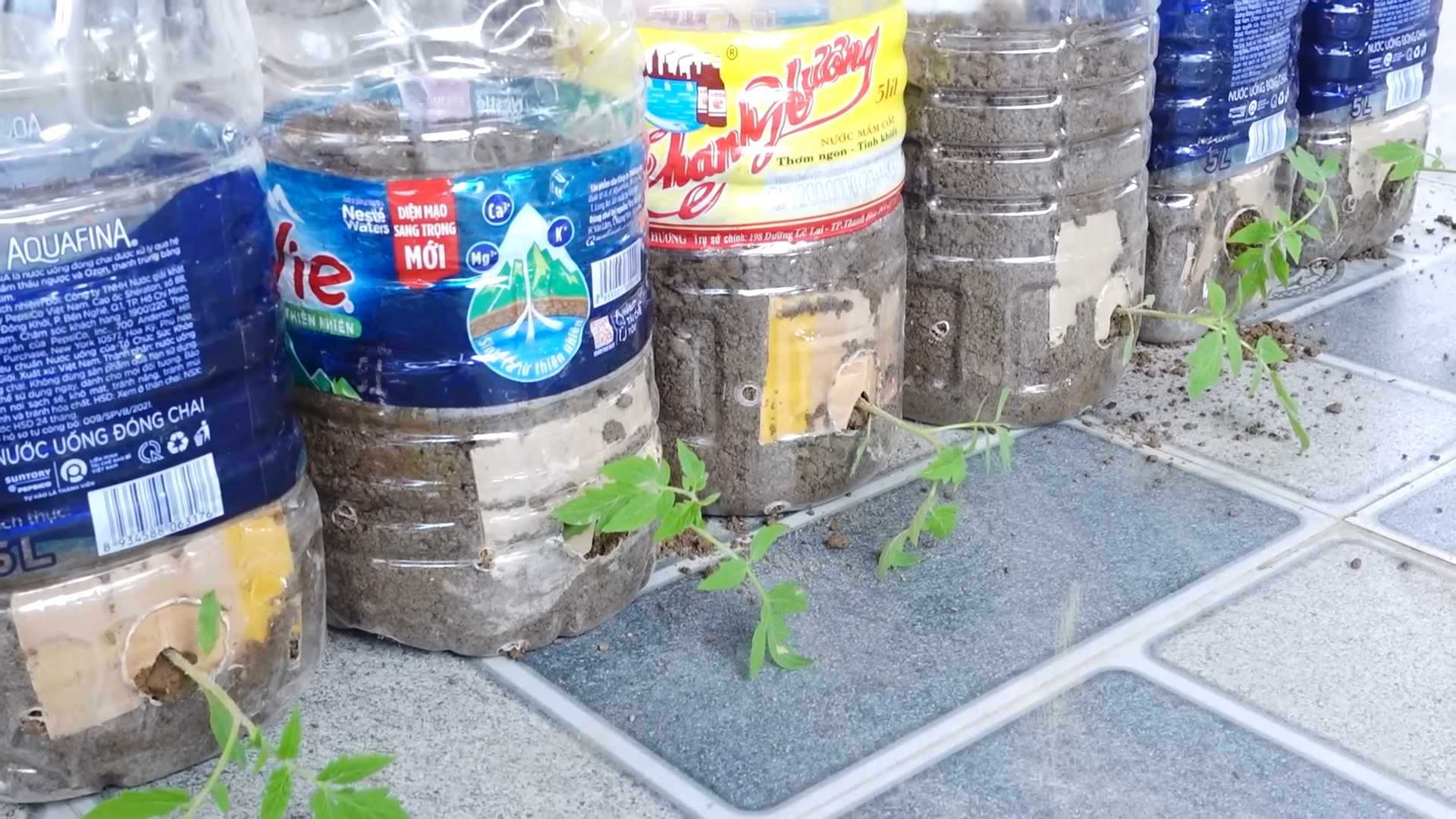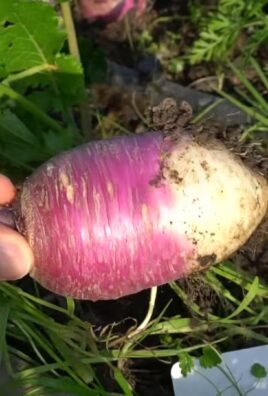Tomato Growing Maximum Harvest – that’s the dream, isn’t it? Imagine baskets overflowing with juicy, sun-ripened tomatoes, the kind that burst with flavor and make every summer salad sing. But let’s be honest, sometimes our tomato plants seem to have other plans, producing a meager handful of fruit despite our best efforts.
For centuries, gardeners have been captivated by the tomato, a fruit that journeyed from the Andes Mountains to become a global culinary staple. From the ancient Aztecs who first cultivated it to the Italian immigrants who popularized it in America, the tomato has a rich and fascinating history. But even with all that accumulated knowledge, achieving a truly bountiful harvest can still feel like a challenge.
That’s where these DIY tricks and hacks come in! I’m going to share some simple, yet incredibly effective, techniques that will help you unlock the full potential of your tomato plants. We’ll delve into everything from soil preparation and pruning secrets to watering strategies and pest control tips. With these methods, you’ll be well on your way to experiencing a tomato growing maximum harvest that will make your neighbors green with envy. So, grab your gardening gloves, and let’s get started!

Maximizing Your Tomato Harvest: A DIY Guide to Tomato-Growing Success
Hey there, fellow tomato enthusiasts! I’m so excited to share my tried-and-true methods for achieving a bumper crop of juicy, flavorful tomatoes. Over the years, I’ve experimented with countless techniques, and I’ve finally cracked the code to maximizing tomato yields. Get ready to transform your garden into a tomato paradise!
Choosing the Right Tomato Varieties
Before we even think about planting, let’s talk varieties. Not all tomatoes are created equal! Selecting the right types for your climate and growing conditions is crucial.
* Determinate vs. Indeterminate: Understand the difference! Determinate tomatoes grow to a certain size and produce all their fruit at once, making them ideal for canning. Indeterminate varieties keep growing and producing throughout the season, offering a continuous harvest. I personally prefer indeterminate for fresh eating.
* Disease Resistance: Look for varieties labeled with disease resistance codes (e.g., V, F, N, T, A). This will save you a lot of headaches down the road.
* Days to Maturity: Consider your growing season length. Choose varieties that will ripen before the first frost. I always check the “days to maturity” on the seed packet or plant tag.
* My Personal Favorites: ‘Brandywine’ for its amazing flavor, ‘San Marzano’ for sauce, and ‘Sungold’ for snacking.
Starting Your Tomato Plants
Starting your own tomato plants from seed is incredibly rewarding and gives you more control over the varieties you grow.
* Timing is Key: Start seeds indoors 6-8 weeks before the last expected frost. I usually start mine in late February or early March.
* Seed Starting Mix: Use a sterile seed starting mix to prevent damping-off disease.
* Containers: I prefer using small seed starting trays or peat pots.
* Light: Provide ample light! A sunny windowsill might not be enough. I use grow lights for consistent and strong seedlings.
* Watering: Keep the soil consistently moist, but not soggy.
* Hardening Off: Gradually acclimate your seedlings to outdoor conditions before transplanting. This is crucial to prevent shock. I usually start by putting them outside for an hour or two each day, gradually increasing the time over a week or two.
Preparing the Soil
Tomatoes are heavy feeders, so preparing the soil properly is essential for a bountiful harvest.
* Sunlight: Tomatoes need at least 6-8 hours of direct sunlight per day. Choose a sunny location in your garden.
* Soil Testing: Test your soil to determine its pH and nutrient levels. Tomatoes prefer a slightly acidic soil (pH 6.0-6.8).
* Amendments: Amend the soil with plenty of organic matter, such as compost, well-rotted manure, or leaf mold. This will improve drainage, aeration, and nutrient content. I usually add a generous amount of compost to my tomato beds.
* Fertilizer: Incorporate a slow-release fertilizer specifically formulated for tomatoes.
* Well-Drained Soil: Ensure the soil is well-drained to prevent root rot.
Transplanting Your Tomato Seedlings
Once your seedlings are hardened off and the danger of frost has passed, it’s time to transplant them into the garden.
* Spacing: Space plants 2-3 feet apart, depending on the variety. Indeterminate varieties need more space than determinate varieties.
* Planting Depth: Plant seedlings deeply, burying the stem up to the first set of leaves. This encourages the development of more roots, resulting in stronger plants.
* Watering: Water thoroughly after transplanting.
* Mulching: Apply a layer of mulch around the plants to conserve moisture, suppress weeds, and regulate soil temperature. I use straw or shredded leaves.
* Support: Provide support for your tomato plants, such as stakes, cages, or trellises. This will prevent the plants from sprawling on the ground and reduce the risk of disease.
Watering and Fertilizing
Consistent watering and fertilization are crucial for healthy tomato plants and abundant fruit production.
* Watering: Water deeply and regularly, especially during hot, dry weather. Aim for about 1-2 inches of water per week. I prefer to water in the morning to allow the foliage to dry before nightfall, reducing the risk of fungal diseases.
* Fertilizing: Fertilize regularly with a balanced fertilizer or a fertilizer specifically formulated for tomatoes. Follow the instructions on the fertilizer label. I like to use a liquid fertilizer every 2-3 weeks.
* Side-Dressing: Side-dress plants with compost or well-rotted manure every few weeks to provide a continuous supply of nutrients.
Pruning and Suckering
Pruning and suckering can improve air circulation, reduce disease, and encourage fruit production.
* Suckers: Remove suckers (the small shoots that grow in the junction between the main stem and a branch) from indeterminate tomato plants. This will direct the plant’s energy towards fruit production. I usually pinch them off when they are small.
* Lower Leaves: Remove the lower leaves of the plant as they start to yellow or brown. This will improve air circulation and reduce the risk of disease.
* Topping: Towards the end of the growing season, you can top the plants (cut off the top of the main stem) to encourage the remaining fruit to ripen.
Dealing with Pests and Diseases
Unfortunately, tomatoes are susceptible to a variety of pests and diseases. Here’s how I combat them:
* Prevention is Key: Choose disease-resistant varieties, provide good air circulation, and avoid overhead watering.
* Common Pests:
* Aphids: Spray with insecticidal soap or neem oil.
* Tomato Hornworms: Handpick them off the plants. They are surprisingly easy to spot!
* Whiteflies: Spray with insecticidal soap or neem oil.
* Common Diseases:
* Early Blight: Remove infected leaves and spray with a copper fungicide.
* Septoria Leaf Spot: Remove infected leaves and spray with a copper fungicide.
* Blossom End Rot: This is caused by calcium deficiency. Ensure the soil has adequate calcium and water consistently.
* Organic Solutions: I prefer to use organic pest and disease control methods whenever possible. Neem oil, insecticidal soap, and copper fungicide are all effective organic options.
Harvesting Your Tomatoes
The moment we’ve all been waiting for! Harvesting your ripe, juicy tomatoes is the ultimate reward.
* Ripeness: Tomatoes are ripe when they are fully colored and slightly soft to the touch.
* Gentle Handling: Handle tomatoes gently to avoid bruising.
* Storage: Store ripe tomatoes at room temperature. Refrigerating them can affect their flavor and texture.
* Green Tomatoes: If frost threatens, harvest any green tomatoes and ripen them indoors. You can wrap them individually in newspaper or place them in a paper bag with an apple or banana to speed up the ripening process.
Specific Techniques for Maximizing Yield
Here are some specific techniques I use to really boost my tomato harvest:
* Epsom Salts: Add Epsom salts to the soil at planting time and again every few weeks. Epsom salts provide magnesium, which is essential for tomato growth and fruit production. I use about a tablespoon per plant.
* Coffee Grounds: Coffee grounds are a great source of nitrogen and other nutrients. I sprinkle them around the base of my tomato plants.
* Eggshells: Crushed eggshells provide calcium, which helps prevent blossom end rot. I add them to the planting hole and sprinkle them around the plants.
* Companion Planting: Plant basil, marigolds, or other beneficial plants near your tomatoes to deter pests and attract pollinators. Basil and tomatoes are a classic combination!
* Air Circulation: Ensure good air circulation around your plants to prevent disease. Space plants properly and prune regularly.
* Consistent Watering: Consistent watering is crucial for preventing blossom end rot and other problems.
* Sunlight: Make sure your tomatoes get at least 6-8 hours of direct sunlight per day.
Troubleshooting Common Tomato Problems
Even with the best care, you might encounter some problems along the way. Here’s how to troubleshoot some common issues:
* Blossom End Rot: This is caused by calcium deficiency. Ensure the soil has adequate calcium and water consistently. You can also spray the plants with a calcium solution.
* Cracking: This is caused by inconsistent watering. Water deeply and regularly, especially during hot, dry weather.
* Sunscald: This is caused by excessive sun exposure. Provide shade for the plants during the hottest part of the day.
* Poor Fruit Set: This can be caused by high temperatures, lack of pollination, or nutrient deficiencies. Ensure

Conclusion
So, there you have it! Unlocking a maximum tomato harvest isn’t some unattainable dream reserved for seasoned gardeners. It’s within your reach, and it all starts with understanding and implementing these simple yet powerful DIY tricks. We’ve explored everything from optimizing soil conditions and strategic pruning to crafting your own nutrient-rich fertilizer blends. Each technique, when combined, creates a synergistic effect, propelling your tomato plants towards unparalleled productivity.
Why is this a must-try? Because it’s about more than just growing tomatoes; it’s about connecting with nature, understanding the life cycle of your plants, and reaping the rewards of your hard work in the form of juicy, flavorful, and abundant tomatoes. Imagine the satisfaction of serving a Caprese salad made entirely from your own homegrown tomatoes, or canning enough sauce to last you through the winter. This isn’t just gardening; it’s a lifestyle.
But the beauty of gardening lies in its adaptability. Feel free to experiment with variations on these techniques. For example, instead of Epsom salts, try using bone meal as a source of phosphorus. If you’re growing heirloom varieties, you might need to adjust your pruning strategy to accommodate their unique growth habits. Consider companion planting with basil or marigolds to deter pests naturally. The possibilities are endless!
Don’t be afraid to get your hands dirty and embrace the learning process. Every garden is unique, and what works for one person might need tweaking for another. The key is to observe your plants, listen to their needs, and adapt your approach accordingly.
We’ve armed you with the knowledge and the tools; now it’s time to put them into action. We are confident that by implementing these DIY tricks, you’ll be amazed at the difference they make in your tomato yield. Remember, consistent effort and attention to detail are crucial for achieving a maximum tomato harvest.
So, grab your gardening gloves, head out to your garden, and start implementing these techniques today. We can’t wait to hear about your success stories! Share your experiences, your tips, and your photos in the comments below. Let’s create a community of tomato-growing enthusiasts who are passionate about maximizing their harvests and enjoying the fruits (or vegetables!) of their labor. Happy gardening!
Frequently Asked Questions (FAQ)
Q: How often should I water my tomato plants?
A: Watering frequency depends on several factors, including weather conditions, soil type, and the size of your plants. As a general rule, aim to water deeply and less frequently, rather than shallowly and often. This encourages deep root growth, which makes your plants more resilient to drought and nutrient deficiencies. Check the soil moisture by sticking your finger about an inch or two into the soil. If it feels dry, it’s time to water. During hot, dry periods, you may need to water daily, while during cooler, wetter periods, you may only need to water every few days. Using a soaker hose or drip irrigation system can help deliver water directly to the roots, minimizing water loss through evaporation.
Q: What are the best types of fertilizer for tomato plants?
A: Tomato plants are heavy feeders, meaning they require a significant amount of nutrients to thrive. A balanced fertilizer with an NPK ratio (nitrogen, phosphorus, potassium) of around 5-10-5 or 10-10-10 is a good starting point. However, as your plants begin to flower and fruit, they will need more phosphorus and potassium. You can supplement with a fertilizer that is higher in these nutrients, such as a 5-10-10 or even a 0-10-10. Organic options like compost tea, bone meal, and fish emulsion are also excellent choices. Avoid over-fertilizing with nitrogen, as this can lead to excessive foliage growth at the expense of fruit production. Remember, the DIY fertilizer blends mentioned earlier in the article can be tailored to meet the specific needs of your plants.
Q: How important is pruning for tomato plants?
A: Pruning is crucial for maximizing your tomato harvest, especially for indeterminate varieties (those that continue to grow throughout the season). Pruning helps to improve air circulation, reduce the risk of disease, and direct the plant’s energy towards fruit production rather than foliage growth. The main goal of pruning is to remove suckers, which are small shoots that grow in the crotch between the main stem and the branches. These suckers will eventually develop into full-fledged branches, but they will also compete with the main stem for resources. By removing them, you can encourage the plant to focus its energy on producing larger, more abundant tomatoes.
Q: What are some common tomato pests and diseases, and how can I prevent them?
A: Tomato plants are susceptible to a variety of pests and diseases, including aphids, whiteflies, tomato hornworms, early blight, late blight, and blossom end rot. Prevention is always the best approach. Start by choosing disease-resistant varieties. Ensure good air circulation by spacing your plants properly and pruning regularly. Water at the base of the plants to avoid wetting the foliage, which can create a favorable environment for fungal diseases. Companion planting with basil or marigolds can help deter pests. Regularly inspect your plants for signs of pests or diseases, and take action promptly if you notice any problems. Organic pest control methods, such as insecticidal soap or neem oil, can be effective for controlling many common pests. Blossom end rot is often caused by calcium deficiency, which can be addressed by adding calcium to the soil or using a calcium-rich foliar spray.
Q: How do I know when my tomatoes are ripe?
A: The color of a ripe tomato will vary depending on the variety, but generally, they should be fully colored and slightly soft to the touch. Avoid picking tomatoes that are still green or hard, as they will not ripen properly off the vine. Gently squeeze the tomato; it should yield slightly to pressure. The aroma of a ripe tomato is also a good indicator of ripeness. It should have a sweet, slightly earthy smell. Once you’ve picked your tomatoes, store them at room temperature, away from direct sunlight. Refrigerating tomatoes can affect their flavor and texture.
Q: Can I grow tomatoes in containers?
A: Yes, you can absolutely grow tomatoes in containers! Choose a large container (at least 20 gallons) with good drainage. Use a high-quality potting mix, not garden soil, as garden soil can become compacted in containers. Select determinate or bush varieties, which are more compact and better suited for container growing. Provide adequate support for your plants, such as a stake or cage. Water regularly and fertilize frequently, as container-grown plants tend to dry out and deplete nutrients more quickly than those grown in the ground. Place your containers in a sunny location that receives at least 6-8 hours of sunlight per day.
Q: What is the best time of year to plant tomatoes?
A: The best time to plant tomatoes depends on your climate. In general, you should wait until after the last frost in your area. Tomato plants are sensitive to cold temperatures, and frost can damage or kill them. You can start your tomato seeds indoors 6-8 weeks before the last frost, or you can purchase transplants from a local nursery. Harden off your transplants by gradually exposing them to outdoor conditions for a week or two before planting them in the ground. In warmer climates, you may be able to plant tomatoes in the fall for a winter harvest. Consult your local gardening resources for specific planting dates in your area.
Q: How can I improve the flavor of my homegrown tomatoes?
A: Several factors can influence the flavor of your homegrown tomatoes. Choose varieties that are known for their flavor. Provide your plants with plenty of sunlight, water, and nutrients. Avoid over-watering, as this can dilute the flavor. Allow your tomatoes to ripen fully on the vine before picking them. Soil health is also crucial for flavor. Amend your soil with compost or other organic matter to improve its fertility and drainage. Some gardeners believe that adding a small amount of Epsom salts to the soil can enhance the flavor of tomatoes. Finally, remember that the best-tasting tomatoes are often those that are grown with love and care!




Leave a Comment